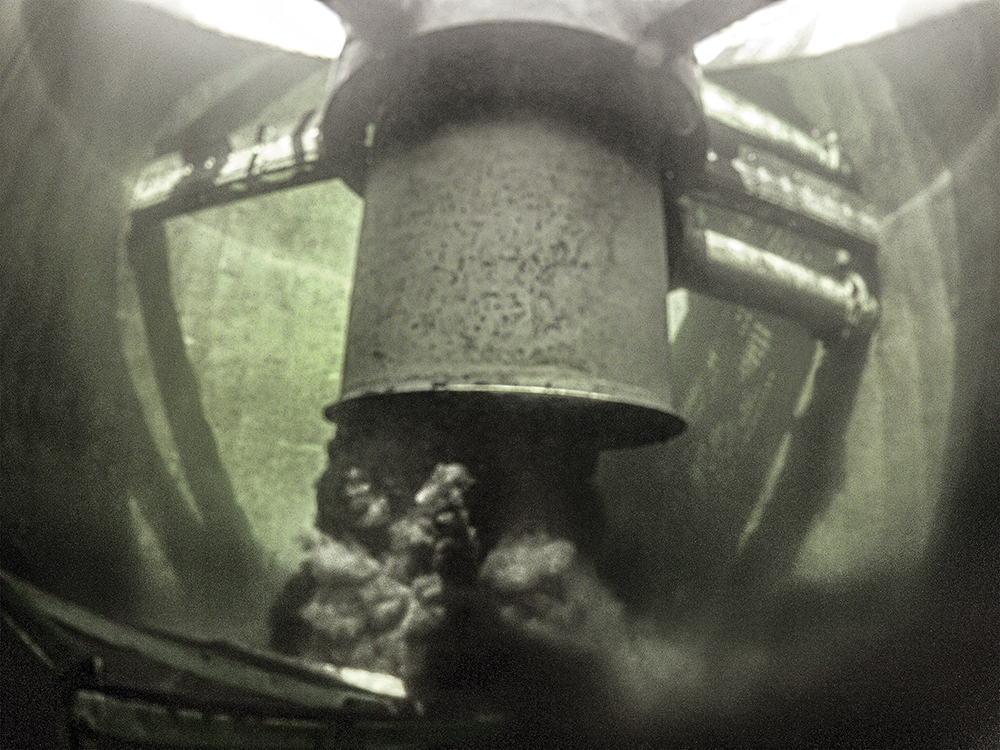Asset Management Programme (AMP 6) has seen a focus on phosphorus removal, and UK water companies have been assessing the different treatment technologies available over a period of months, sometimes years before making investment decisions.
Evoqua Water Technologies offers two innovative systems – BioMag® and CoMag® – that meet both the increasingly stringent effluent limits on phosphorus as well as expanding capacity whilst reusing existing site assets.
One company that has adopted both solutions is Severn Trent Water at their Finham and Rugby Waste Water Treatment Works.
BioMag System – Rugby Sewage Treatment Works
Problem
The site is anticipating significant growth in population by 2028 whilst having restricted and limited space on site for the conventional expansion of four additional large clarifiers. Severn Trent required an innovative solution that will meet the needs of a 25% increase in capacity (flow to full treatment (FFT) of approximately 60,000 m3/day) and the new environmental standards (2020) of <0.4 mg/l total phosphorus.
Solution
For Rugby, the new BioMag® system will be installed to meet both the new phosphorus limit and the expected increase in FFT required as the local population increases. As an alternative to adding more final settlement tanks, the BioMag system will allow Rugby to utilize its existing assets – resulting in installation at a fraction of the cost of conventional expansion. Settling tests indicate that by converting to the BioMag system the existing final settlement tanks at Rugby will be capable of treating double the existing capacity – ensuring that future FFT loads can be accommodated.
The BioMag system uses a magnetite ballast – fully inert, iron ore particles – to enhance settling rates of the existing activated sludge process. The settlement rates across the existing final settlement tanks will be greatly improved even with the predicted 25% increase in flow anticipated at the works.
Conversion to the BioMag system will also allow the new stricter effluent limits on phosphorus to be met without the need for further tertiary treatment
Ed Ruswa, Senior Process Design Engineer for Severn Trent Water says, ‘Conventional treatment methods would have required a large expansion at a higher cost, however by transferring this innovative technology from North America and following UK water industry funded pilot trials, the BioMag system will help Severn Trent deliver its customer funded objectives and continue to offer the cheapest customer bills in the UK.’
About the BioMag system
The BioMag system can achieve up to 2-3 times the throughput of existing conventional activated sludge plants by improving settlement and allowing the user to run at higher mixed liquor suspended solids (MLSS) in the biological tanks. BioMag systems improve settling, allow for increase in throughput, provide better effluent quality and can be installed within the existing asset footprint – making it an ideal process for expansion of existing plants.
CoMag® System – Finham Sewage Treatment Plant
Problem
The Finham plant was charged with meeting a new phosphorus limit of 0.22 mg/l of total phosphorus (T-P) by 2020 before the treated water discharges into the River Sowe. The plant is also expecting to treat more flow to these significantly more stringent effluent treatment standards.
Solution
For Finham the CoMag system is being installed to meet these challenging new phosphorus limits being imposed by the Environment Agency. Finham is one of the largest plants (FFT of 250,000 m3/day) within the Severn Trent Water group treating wastewater from the City of Coventry. Due to the scale of the plant, a reliable, proven and secure technology was required. The CoMag system had been previously trialed by Severn Trent Water and this provided the confidence that the CoMag system was the correct technology choice.
As well as the process reliability, the design team used existing redundant sand filters on the site as the mixing tanks for the CoMag system which saved significant civil cost.
“After evaluating several technologies, we selected the CoMag system because it allows us to cost effectively meet new phosphorus discharge limits,” said Peter Sugden, Programme Manager for Severn Trent Water. “We are saving a significant amount of money by reusing existing but redundant sand filter infrastructure as the reaction tanks. We are also saving space by using custom-designed clarifiers from Evoqua that can process wastewater ten times faster than a conventional clarifier, thanks to the CoMag system.”
About the CoMag System
The CoMag system can achieve total phosphorus down to 0.05 mg/L when integrated into a coagulation/flocculation process or clarifier. Retrofit costs are also reduced with the CoMag system because it is compatible with most existing infrastructure and clarifiers. Additionally, the CoMag system’s magnetite ballast is 75 percent smaller than sand particles and less abrasive, which helps extend equipment service life. Up to 99 percent of magnetite is recovered for reuse in the system.




